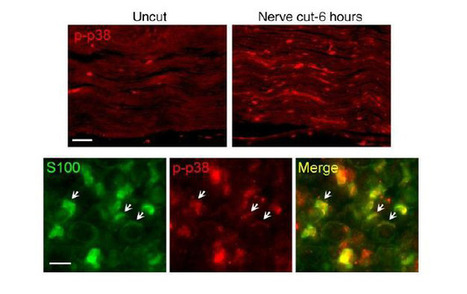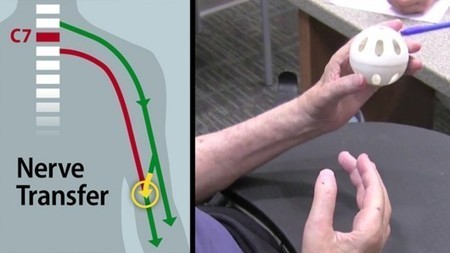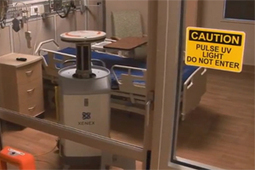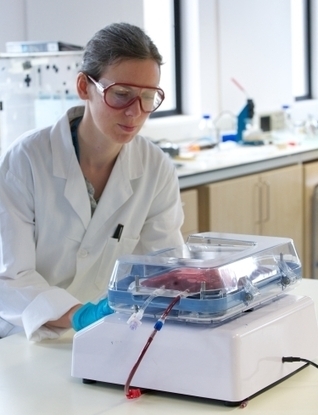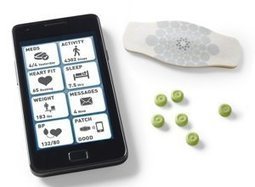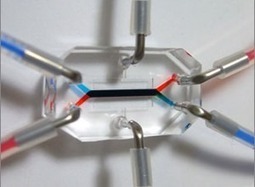 Your new post is loading...
 Your new post is loading...
The only thing worse than breaking a bone is waiting for it to heal. During the healing process itself, wearing a fiberglass and plaster cast can be a stinky, itchy endeavor that is uncomfortable and inconvenient; all for an injury that is completely internal. Enter Jake Evill's Cortex concept. Beyond having an awesome last name, Jake Evill, a media design graduate of the Victoria University of Wellington in New Zealand, has managed to modernize the ancient concept of a splint using 3D printing technology.
What if you could read my mind? What if I could beam what I’m seeing, hearing, and thinking, straight to you, and vice versa? What if an implant could store your memories, augment them, and make you smarter? Long the stuff of science fiction, technology that can directly tap into, augment, and connect human brains is becoming science fact. And that means big changes for all of us.
Repression of a single protein in ordinary fibroblasts (connective tissue) is sufficient to directly convert them into functional neurons, scientists in the U.S. and China have discovered. The findings could have far-reaching implications for the development of new treatments for neurodegenerative diseases like Huntington’s, Parkinson’s and Alzheimer’s.
From cancer treatments to new devices to gene therapy, a look at six medical innovations that are poised to transform the way we fight disease.
Using implants made from porous biocompatible materials, scientists have recently been successful in regrowing things such as teeth, tendons and heart tissue, plus bone and cartilage. The materials act as a sort of nanoscale three-dimensional scaffolding, to which lab-cultivated cells can be added, or that the recipient’s own cells can colonize. Now, a Spanish research team has used the same principle to grow new brain tissue – the technique could ultimately be used to treat victims of brain injuries or strokes.
Med Sensation's Glove Tricorder is outfitted with numerous sensors to detect breast cancer and other internal medical problems when placed on different areas of the body.
MIT researchers have developed RNA-delivering nanoparticles that allow for rapid screening of new drug targets in mice. By sequencing cancer-cell genomes, scientists have discovered vast numbers of genes that are mutated, deleted or copied in cancer cells. This treasure trove is a boon for researchers seeking new drug targets, but it is nearly impossible to test them all in a timely fashion.
Two years after becoming the first child to receive a trachea transplant coated with his own stem cells, 13-year-old Ciaran Finn-Lynch is doing so well that he has finally returned to school.
Imagine for a second that you are suffering from some kind of liver illness that reduces your liver function to 10%. In order to recuperate, you would need a liver transplant or another fix that increases your liver’s function. In the future, that could be entirely possible thanks to 3D printing. As a matter of fact, scientists and engineers all say that it won’t be long before we can print custom made full organs to replace the non-functioning ones.
Researchers have now reported that the use of quantum dots - tiny luminescent crystals that can be used to monitor disease at a cellular level - appears to be safe in primates over a one-year period.
Researchers from the Peninsula College of Medicine and Dentistry, University of Exeter, in collaboration with colleagues from Rutgers University, Newark and...
Technology has the potential to transform our concept of sickness Digitizing the human: The evolving digital revolution can be used to change individual care and prevention, and even the economics of American healthcare.
We just saw that a patient was able to control a robotic arm using her thoughts. She was able to give herself a sip of a drink. Now, surgeons at the Washington University School of Medicine have rerouted working nerves in the upper arms of a quadriplegic patient, to restore some of he patient's hand function.
|
New technology may be ushering in the age of robotic surgery, but there is still a role for cutting-edge electronics to play in augmenting a surgeon's natural talents. The latest example of this comes from Germany, where researchers have proposed a way for doctors to operate using their own standard instruments by developing a special handle that fits on most surgical tools and lights up to indicate when enough pressure has been used during a procedure.
There may soon be help for people who have been rendered functionally deaf by problems of the middle ear. Researchers from Sweden’s Chalmers University of Technology have developed an implant that bypasses the defective middle ear, transmitting sounds to the inner ear by sending vibrations right through the skull bone.
It’s a staggering modern-day irony that the most common complication for hospital patients is acquiring an infection during their visit, affecting 1 in 20 patients in the US. It’s a problem estimated to cause millions of infections with 100,000 or so leading to death per year and a whopping $45 billion annually in hospital costs. If this isn’t bad enough, the tragedies from deadly superbugs within healthcare facilities are on the rise and will likely continue as the last lines of antibiotics fail without any new drugs moving fast enough up the pipeline to help. Fortunately, an alternative to medication promises to vastly improve the disinfection of hospital rooms, thanks to a UV light-emitting robot from Xenex Healthcare.
Ordinarily, when medical clinicians are conducting blood tests, it’s a somewhat elaborate affair. A full vial of blood must be drawn, individual portions of which are then loaded into large, expensive machines such as mass spectrometers. The results are usually quite accurate, but they’re not instantaneous, and require the services of trained personnel in a well-equipped lab.
A pioneering surgical blood salvage technology developed at the University of Strathclyde, Glasgow, is set to transform the way major surgery is carried out by reducing blood loss in patients. This device recovers and recycles the blood that is spilled during surgery. It then processes and returns the blood to the patient through autotransfusion. By using the patient's own blood, there is a lower need for donor blood, and a lesser risk of reaction from the transfusion. HemoSep, as the new device is called, has succeeded in clinical trials and has been approved for use in Europe and Canada.
One company is working on creating pills with tiny chips to keep track of when a patient is medicating, in order to maintain the correct schedule. This digital feedback technology can prompt patients to take their medicine and even ask them to take a walk if they have been inactive for too long. Besides reminding you to take a pill, this technology could be used to track complex medical routines in the future.
The Food and Drug Administration has just approved a device that is integrated into pills and let’s doctors know when patients take their medicine – and when they don’t. Adherence to prescriptions is a serious problem, as about half of all patients don’t take medications the way they’re supposed to. But with patients doctors now becoming big brother, that statistic could change drastically.
Today’s standard sequencing method uses an indirect approach to DNA sequencing based on fluorescently-tagged nucleotides, the building blocks of DNA. However, Ion Torrent has developed a simple, yet ingenious way to detect the sequence of nucleotides in a sample of DNA. Exploiting the fact that a hydrogen ion is released whenever a nucleotide attaches to a strand of DNA, sensors in Ion Torrent’s microchip have been designed to detect this chemical signature. Equality in gene sequencing ahead?
“Organ-on-a-chip” technologies could not only do away with animal models that have proven disappointingly unreliable, but their ease of use and affordability could speed up the drug discovery process. The newest of these, gut-on-a-chip, attempts to mimic the physiology, structure, and mechanics of the human intestines. It is roughly the size of a thumb drive and contains a central chamber that houses a pliant, porous membrane lined with human intestinal epithelial cells, producing an artificial intestinal barrier. It can even harbor the microbes normally abundant in our gut’s luminal space. Not only does the 3D chip mimic organ anatomy, the membrane is controlled with a vacuum pump to produce the peristaltic motions that occur during digestion.
A team of bioengineers at the University of Washington has developed the first structure for growing small human blood vessels in the laboratory. The vessels behave remarkably like those in a living human and offer a better and much more modular approach to studying blood-related diseases, testing drugs and, one day, growing human tissues for transplant.
The past year alone has brought remarkable advances in blood vessel regrowth in the human body...
You probably didn't know it, but robots already work in pharmacies. Many hospitals have been using ROBOT-Rx to dispense medication doses. With near-perfect accuracy, this robo-pharmacist stores, counts, dispenses, and keeps records. All the humans have to do is prescribe the medication.
A graphene sensor effectively tattooed onto a tooth can be used to detect bacteria and so wirelessly monitor oral health, research has shown.
|



 Your new post is loading...
Your new post is loading...

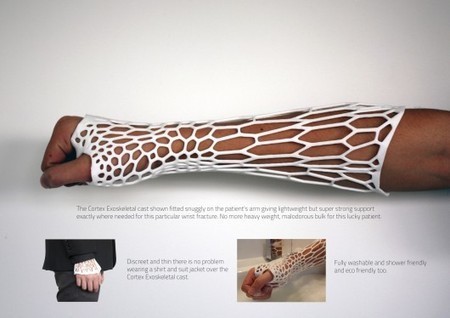

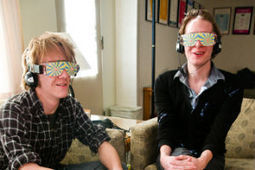
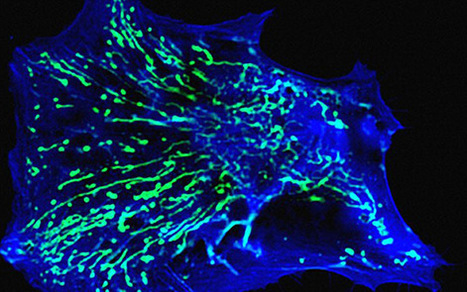
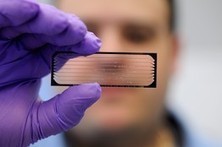
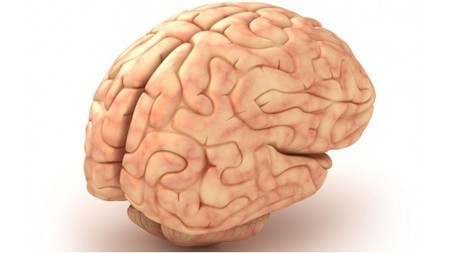

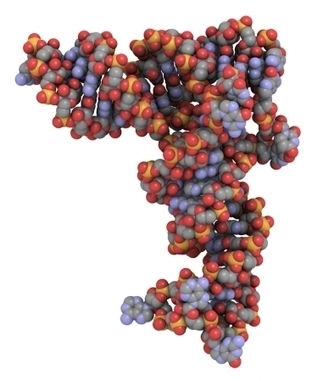

![How 3D Printing The Human Body Works [Infographic] | Longevity science | Scoop.it](https://img.scoop.it/sUhpnZ0d6cOt-PdzGSKqczl72eJkfbmt4t8yenImKBVvK0kTmF0xjctABnaLJIm9)

